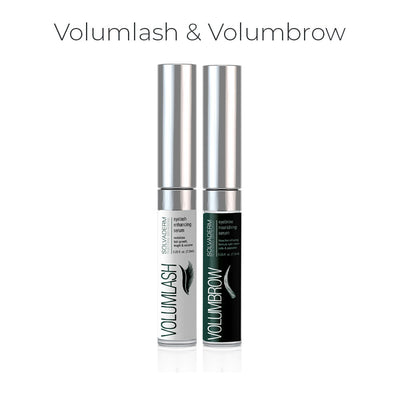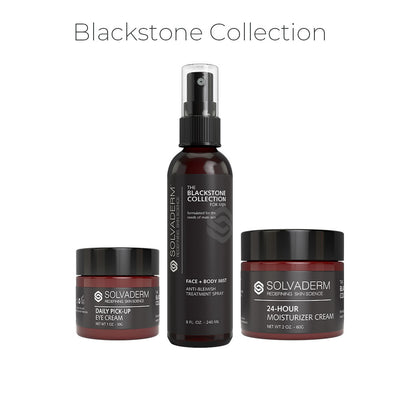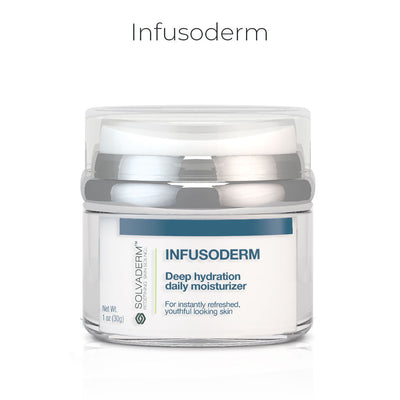Yay! Autumn is here, along with some Fall Skincare routines. The beautiful color of fall is worth looking forward to, along with its shorter days and cooler temperatures.
However, is it kind to your skin?
Like any other season, you ought to prepare your skin for autumn's brisk weather, which can be very drying. In summer, you use lighter products to reduce the natural oils or sebum your skin produces, thereby preventing clogged pores and breakouts. But in autumn, the case is different; the transition might not be too smooth for your skin, mainly if you still rely on your summer routine to give you that dewy complexion.
In this blog, we'll show you how autumn affects your skin and the ways you can keep your skin glowing throughout the season with this fall skincare routine guide.
Why Does Skin Change in Fall?
The skin is the body's largest organ and part of the integumentary system, which serves as a protective barrier between the outside and the inside of the body.
It signals when something's not right in or around you, be it a change in the weather, diet, or wrong application of products. It can tell that something is wrong, usually through skin reactions, so the next time you notice breakouts or other unfamiliar skin disorders or reactions, you might want to listen attentively to what your skin is trying to tell you.
But how does the fall season affect your skin, and why do you need to change your skincare routine?
The top layer of your skin is responsible for using sebum to trap moisture and keep your skin hydrated. But when autumn comes, the cool, dry air quickly strips your skin of these natural oils, leaving it dehydrated and vulnerable to several skin problems.
S.Tyler Hollmig, M.D., Director of Dermatologic Surgery at UT Dell Medical School in Austin, Texas, says fall and winter trigger eczema and skin irritation more than other seasons.
So if you already suffer from dry skin conditions like eczema, rosacea, dermatitis, etc., you’ll definitely want to ramp up your routine.
That's why we recommend richer, heavier skin care products during the fall season to protect your skin from losing moisture too fast.
Now that you know why your skin changes in the fall, let's look at the five essential tips for having great skin this fall season.
5 Essential Tips for Glowing Skin in Fall
Step #1 - Cleanse
Cleansing is essential to your skin, no matter the season. However, in cooler months like autumn, when your skin is most likely to dry out, a hydrating cream-based cleanser works best.
Ditch the oil-sapping soaps and gel cleansers for products with hydrating and non-irritating ingredients like aloe, jojoba oil, hyaluronic acid, green tea, etc. Cream-based cleansers are perfect for dry skin because they eliminate excess oils, dirt, and impurities without drying out your skin. That means you can enjoy a refreshing skin cleanse without feeling tight and dry.
We recommend Dermpura gentle cleanser from Solvaderm, with its soothing ingredients like seaweed extract and glycerin, as part of your skincare routine in autumn.
Step #2 - Tone
A toner's job is to help your skin transfer nutrients from the top layer of skin to the dermis. It brightens your complexion and gives it the extra boost it needs to glow.
We recommend toners with intensely hydrating ingredients like hyaluronic acid and botanical extracts.
Our Maxatone toner, for instance, will help lock moisture from the atmosphere in your skin for lasting softness. Do not use overly harsh astringents or alcohol-based toner on your face during the dry months.
A great way to get the best out of your hydrating toner is by using it as a spritz and applying it intermittently throughout the day.
Step #3 - Apply Serums
One of the ways you can beat autumn's transitional changes on your skin is to switch up your skincare regimen, specifically your face serum.
There are several kinds of serums for various skin types, so you must carefully select the one that best suits you. Face serums that help replenish moisture in the skin to keep it supple are wonderful for dry skin and for the fall season, Lindsey Zubritsky, M.D., a certified dermatologist, says you can use serums that contain humectants like hyaluronic acid and ceramides.
Step #4 - Facial Oil
The skin's surface has a protective layer called the hydrolipidic film. This serves as the first line of defense against invading foreign bodies. The layer comprises water, sebum (natural oils), and many skin-friendly micro-bacteria that protect the skin. It helps to nurture your skin and maintain its supple, youthful look.
When you gently apply suitable carrier oils on your face, it balances the natural pH of the hydrolipidic film, which will ensure you have soft and healthy-looking skin. No matter your skin type, using a facial oil is highly beneficial.
Some of these oils have natural moisturizing components that mimic the ones in the skin's hydrolipidic layer, which make them great for your daily skincare routine. Other carrier oils contain polyunsaturated fatty acids like Omega 6, linoleic acid, natural tocopherols, etc., which also support skin health.
If your skin has been feeling different lately, even with all your heavy-duty moisturizers, why not consider adding face oils to your regimen?
There are lots of carrier oils that are extremely helpful for replenishing dehydrated skin, like Argan, jojoba, coconut, avocado, rosehip, moringa oil, etc. These oils are perfect for protecting your skin during the fall and winter months and you can apply them during the day or at night.
Step #5 - Use Sunscreen
Don’t make the mistake of skimping on sunscreen because the weather is overcast - you still need to keep your skin properly protected!
There is a difference between the UVA and UVB rays of the sun. The latter is responsible for the sunburns the skin suffers during the hot months. But in fall and winter, the UVA rays come into play and are responsible for wrinkles, fine lines around the eyes and lips, dry skin, and rapid aging. It’s important to note, both types of UV rays of the sun are always present, just that they are more evident in some seasons than others, and both can cause skin cancer, so you don't want to skip this part of your routine, ever!
The bottom line, SPF is a must, not just as part of a summer routine. Use sunscreen with a high SPF level and hydrating qualities like Solvaderm's Dermaxsol.
How to Get rid of Dry Skin around the Mouth
One of the skin reactions that the windy, cold days of autumn can cause is dry patches on the skin around your mouth. Although this can be caused by several factors, including lifestyle habits, the wrong products, indoor heating, etc., some skin problems like perioral dermatitis and eczema can also contribute to the condition.
So how can you get rid of dry skin around the mouth, especially in this fall season?
Here are a few tips:
- Moisturize your lips regularly with Sundefend.
- Avoid all known allergens or irritants.
- Don't use products with artificial ingredients, dioxane, or alcohol. They are extremely drying.
- Exfoliate your skin with Glowpeel to gently remove the dead skin in the area around your mouth, avoiding direct contact with the lips.
- Use a sunscreen moisturizer like Dermaxsol to protect your skin from the sun's UV rays.
Useful Skincare Products to Consider
Whenever the season changes is a good time to reassess and modify your skincare routine for optimal performance. The drop in temperature during the brisk cold weather of autumn means you'd need to swap summer's lightweight favorites for something more suitable such as these seasonal must-haves:
Use Lip Balm
Chapped lips are the norm this season because the cold winds of autumn quickly dry out your skin, especially where it is thinner, as on the lips. Unattended cracks on your lips may lead to inflammation or bigger problems so combat dryness with a hydrating and moisturizing lip balm like Sundefend which can be applied as often as needed.
Try Eye Cream
Summer has come and gone, but it may have left you with fine lines, crow’s feet, dark eye circles, and other aging signs.
If you can’t put these common signs of aging down to too many late nights, poor diet, and lack of exercise, then it might be another problem - the sun.
Yes, the sun's UV rays are notorious for causing a myriad of skin issues, from wrinkles and eye bags to hyperpigmentation and skin cancer.
You need eye cream like Solvaderm's Eyevage to protect the fragile skin around the eyes from being compromised.
Boost Routine With Vitamin C
The benefit of vitamin C for the skin cannot be overemphasized. It brightens dark spots, prevents sun damage, improves wrinkles and fine lines, slows premature aging, and boosts the skin's overall appearance. Not only that, but many certified dermatologists swear by it.
As an antioxidant, vitamin C fights harmful free radicals that enter the skin from external or internal pollution. Free radicals can damage your skin over time, but the topical application of this active agent, especially when paired with vitamin E, can help protect it.
Fall Season Skincare Beauty Tips
This fall, make the decision to change your skincare routine for the better, adding products that ensure the skin stays fully hydrated and protected. You want your skin to look dewy all season long and not dry or dull from cold, windy days.
However, there are other things you could do apart from changing your skincare routine to help hydrate your skin.
Make Use of a Humidifier
Your heater may keep the home cozy and warm, but it also sucks in all the moisture in the atmosphere, leaving little for your skin!
Using a humidifier will keep levels of moisture high and reduce the risk of your skin becoming over-dry.
Don’t Use Hot Water
It’s tempting to take long, hot showers in the winter, but keep in mind that hot water is not your best friend right now. It quickly strips your skin of the natural oils it needs to stay moisturized and this can lead to a dry, dull look.
Use warm or tepid water instead and don’t linger too long in the shower or bathtub.
Use Body Cream
Your face isn't the only area that needs extra TLC; you need to take care of your body too. So ditch the lightweight, water-based body lotions and use a richer cream-based moisturizer instead.
Exfoliate Lightly
It’s important to exfoliate all year long and some dermatologists say you should do this at least twice a week in the fall.
Whatever your skin type, use a gentler fruit acid-based formula rather than a sugar scrub or other physical exfoliants. These natural active ingredients can break the bonds between dead skin cells and effectively remove them.
Drink Lots of Water
As you do your best to hydrate your skin on the outside, do the same from the inside by drinking an adequate amount of water. It’s true, you may not feel as thirsty as in the humid summer, but you still need proper hydration to counter the effects of the low humidity which saps your body's much-needed moisture. Therefore, you must drink approximately 2 liters a day to boost your hydration levels.
FAQs
Question #1 - How does skin change in fall?
The transition between the warm, humid summer into the colder autumn can be quite shocking to the skin. Since the skin is a barrier that protects from environmental factors, it's usually the first thing to get traumatized by the changing seasons. The colder temperatures and low humidity of fall sap moisture from the skin, making it dry, dull, and itchy. Therefore, it is essential to stock up on cream-based moisturizing and hydrating products that will replenish your skin's lost moisture.
Question #2 - How do you prepare your skin for fall?
This fall, your routine should be all about hydration. Ditch your water-based moisturizers that you’ve been using all summer and embrace cream-based hydrators. Your cleansers, toners, moisturizers, and other products in your regimen must contain ingredients that hydrate your skin such as hyaluronic acid, ceramides, glycerin, and botanical oils, which all help to attract moisture from the air and counteract dryness.
Question #3 - How do I transition my skincare routine from summer to fall?
First, remove dead skin cells and dry patches by exfoliating at least twice a week using lighter, natural-based exfoliants instead of scrubs.
Second, don't skip sunscreen. It's just as important now as it was in summer. Finally, use cream-based moisturizers that keep the skin soft and supple
Bottom Line
Looking after your skin may take a little extra effort during the changing seasons, but it is worth it. Make sure you properly care for your skin in the fall by using clinically proven products from Solvaderm's Fall Collection to keep it hydrated and moisturized throughout the cold months.








